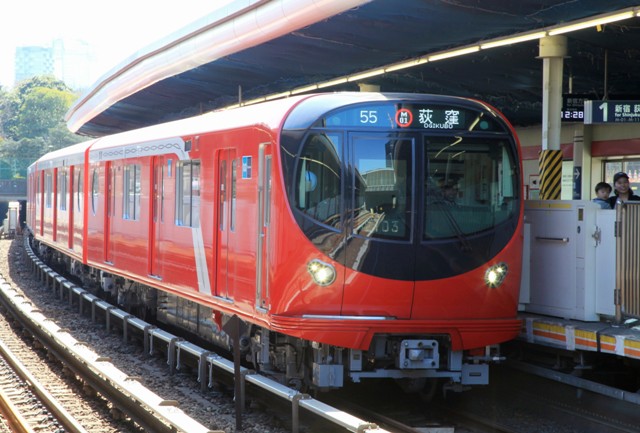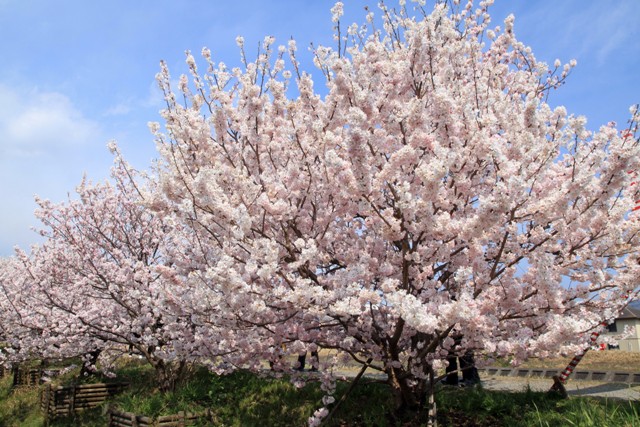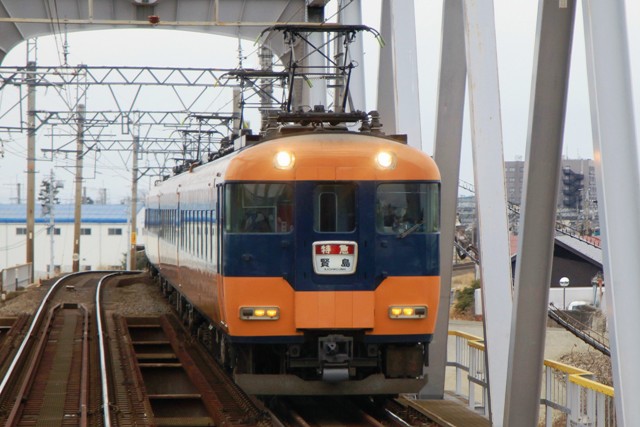2103F of the EMU Tokyo Metro 2000 series stands at Yotsuya station
On February 23rd, Tokyo Metro launched a new model on their Marunouchi Line for the first time in 30 years.
The brand new train named EMU 2000 series has aluminum alloy bodies with rounded shaped frontal design. Its body color is glowing red with a white stripe. Look closely, the stripe has silver colored sign curves inward, which are the same design as the first generation model, electric car 300 series, on the Marunouchi line. The round-shaped side windows are cute and my favorite. With respect to the technical specifications, the 2000 series adopts some new technologies for example single axle steering truck. Thanks to the new truck, the 2000 series can be smoothly and quietly operated even on tight curves.
The 2000 series has free spaces in the cars. There are small tables and baggage hangers in the free spaces. Power receptacles are also equipped so that passengers can charge their mobile phones as necessary. Currently, 3 sets, 18 units of the 2000 series are operated on the Marunouchi line. Tokyo Metro plans to introduce a total of 53 sets, 318 units of the 2000 series by 2022.
For your information, the Marunouchi Line is Tokyo's second oldest subway route that was primarily opened between Ikebukuro and Ochanomizu (6.4 kilomters) in 1954. Currently, its total route length is 27.4 kilometers including the Honancho branch line. The gauge size is 1,435 mm and the electric system is 600 V DC third rail.
Side view of the EMU Tokyo Metro 2000 series
Official information about the EMU Tokyo Metro 2000 series (in Japanese):



















